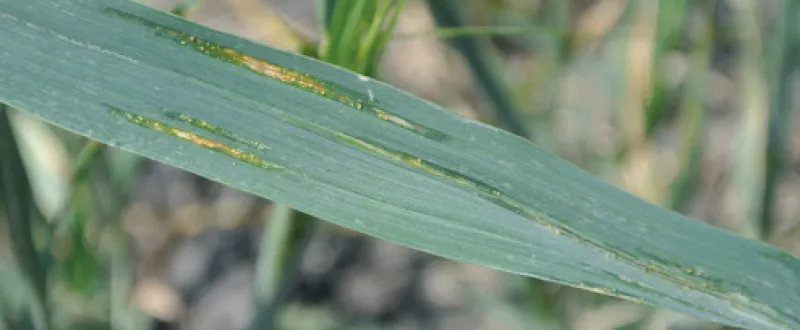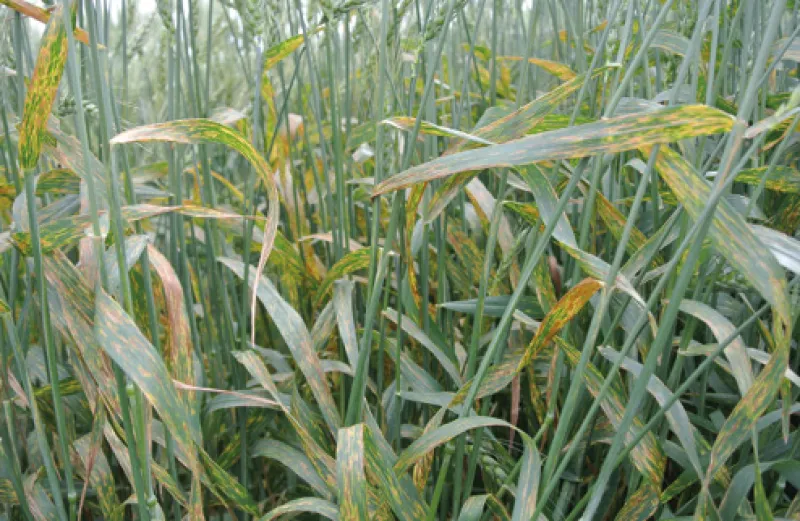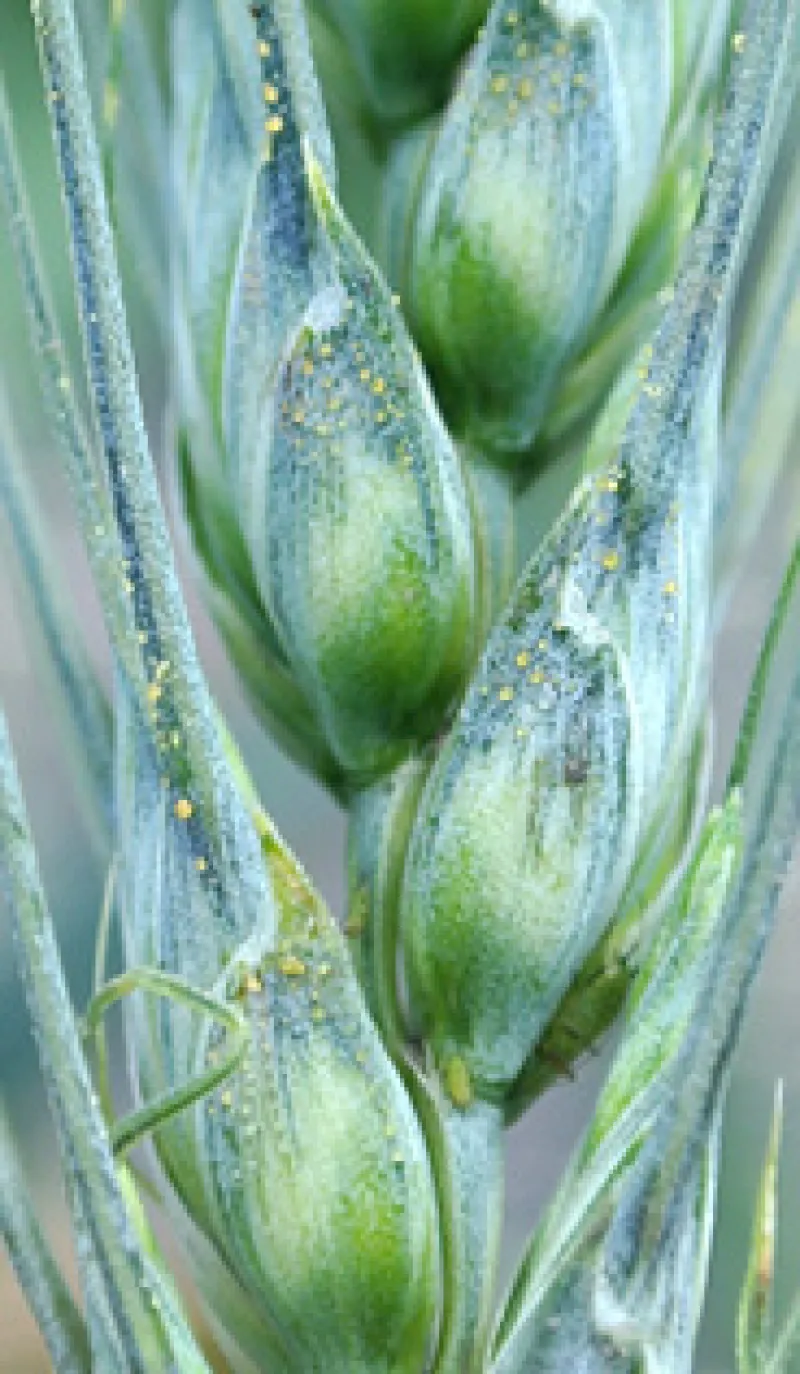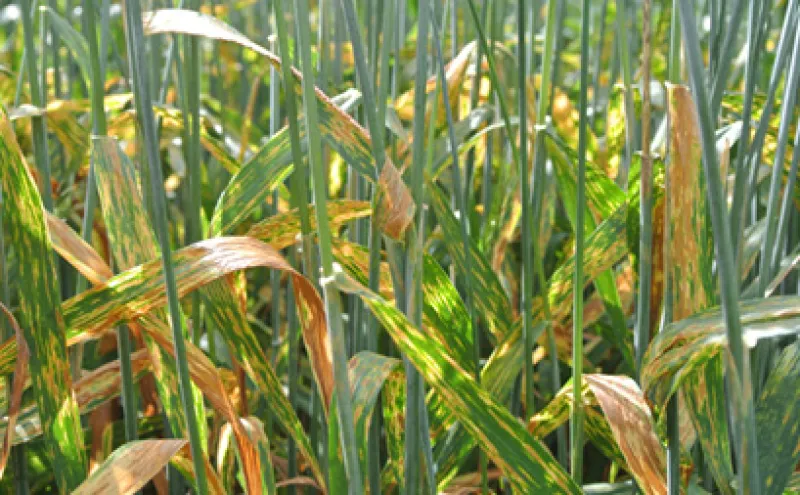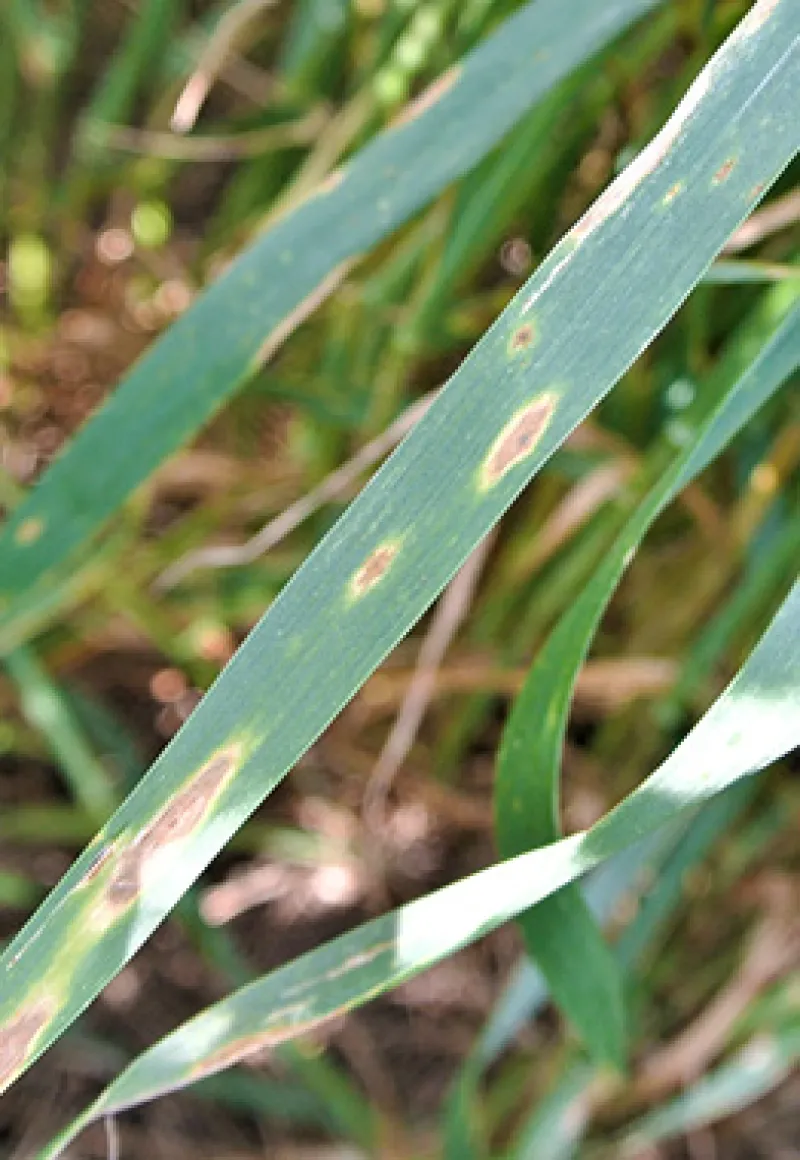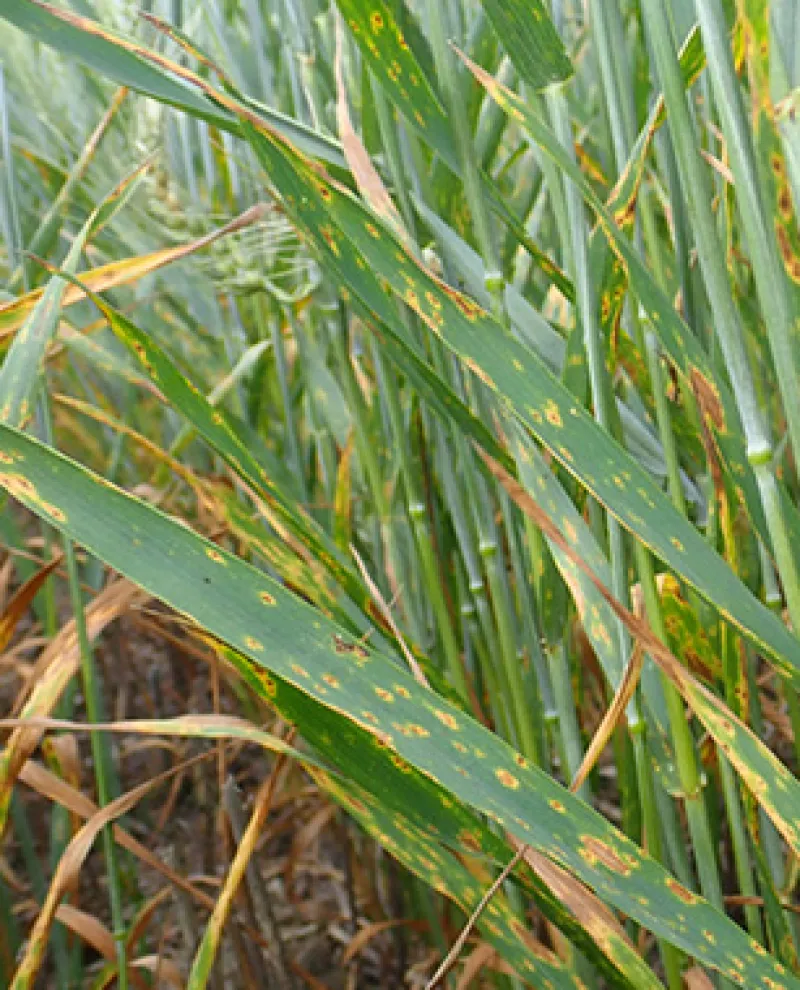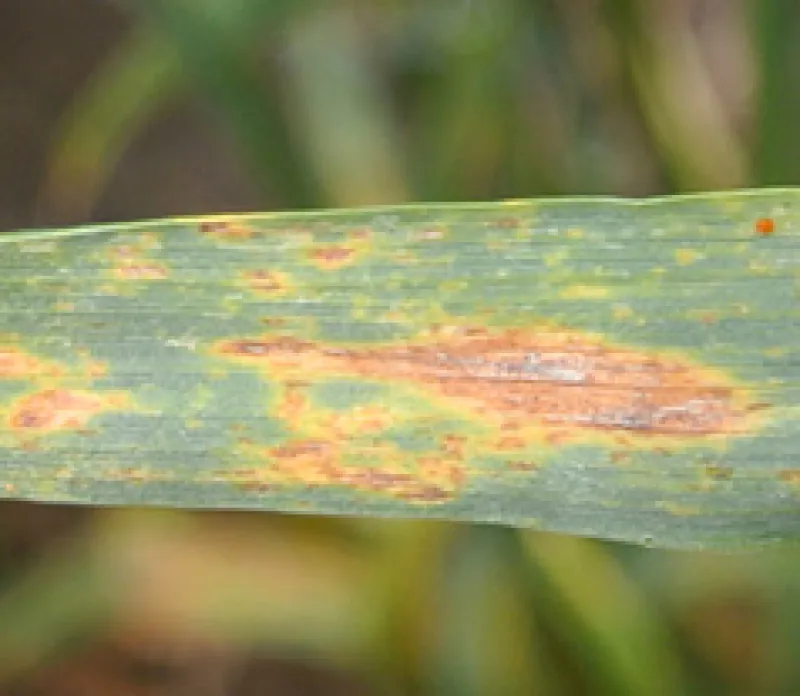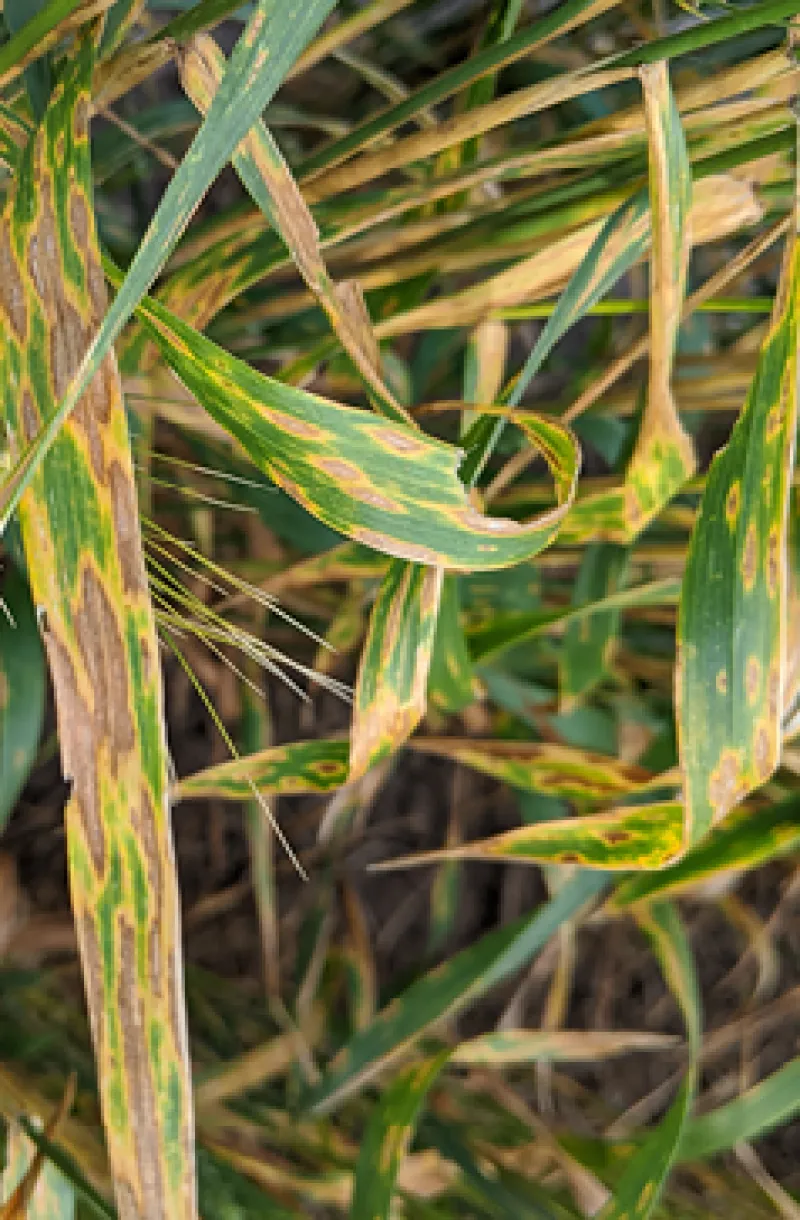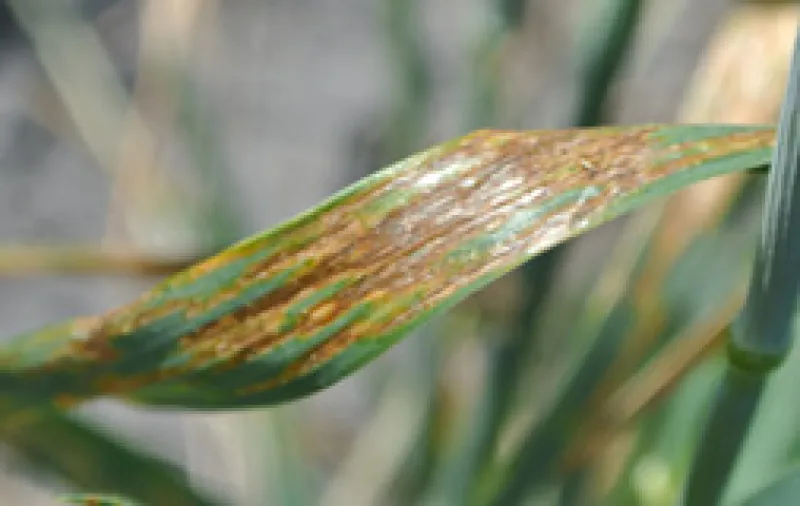Leaf symptoms: Early leaf infections are characterized by irregular translucent water-soaked streaks and readily observed on the flag leaf (Figure 1A and 1B). After prolonged periods of leaf wetness, bacterial exudate (ooze) can form within lesions.
Streaks eventually will turn yellow (chlorotic) and then brown (necrotic), reducing the photosynthetic potential of the flag leaf (Figure 2). Streaks also may appear shiny as clumps of bacteria dry on the leaf surface (Figure 3).
Leaf symptoms of BLS can be confused with the fungal leaf spots tan spot and Septoria blotch. A couple of tips to differentiate between BLS and fungal leaf spots include the onset of disease, appearance of lesions, color of lesions and presence of fungal structures.
Tan spot lesions have a distinct ellipsoid shape with a tan or dark brown center and a yellow halo (Figure 4A). Tan spot also tends to appear earlier in the season and move up the crop canopy gradually.
Septoria causes lens-shaped or irregular lesions that often have a grayish, non-water-soaked appearance and sometimes harbor “pepper-grain” sized spore-bearing structures of the fungus
(Figure 4B).
Symptoms of BLS tend to become most apparent after thunderstorms and high-wind rain events (Figure 4C). However, these leaf diseases are difficult to differentiate at the later growth season when lesions coalesce and often they occur together as a leaf disease complex.
Glume symptoms: For BLS, the bacterium may infect the glumes during grain fill and cause dark purple to black streaks, a symptom called black chaff (Figure 5). A purple to yellow lesion on the peduncle (stem tissue below head) often is associated with black chaff. Severe black chaff may result in discolored kernels.
Black chaff symptoms can look similar to glume blotch caused by fungi in the Septoria species complex. However, Septoria glume blotch symptoms are characterized by brownish-gray lesions on the glumes and awns (Figure 4B).


